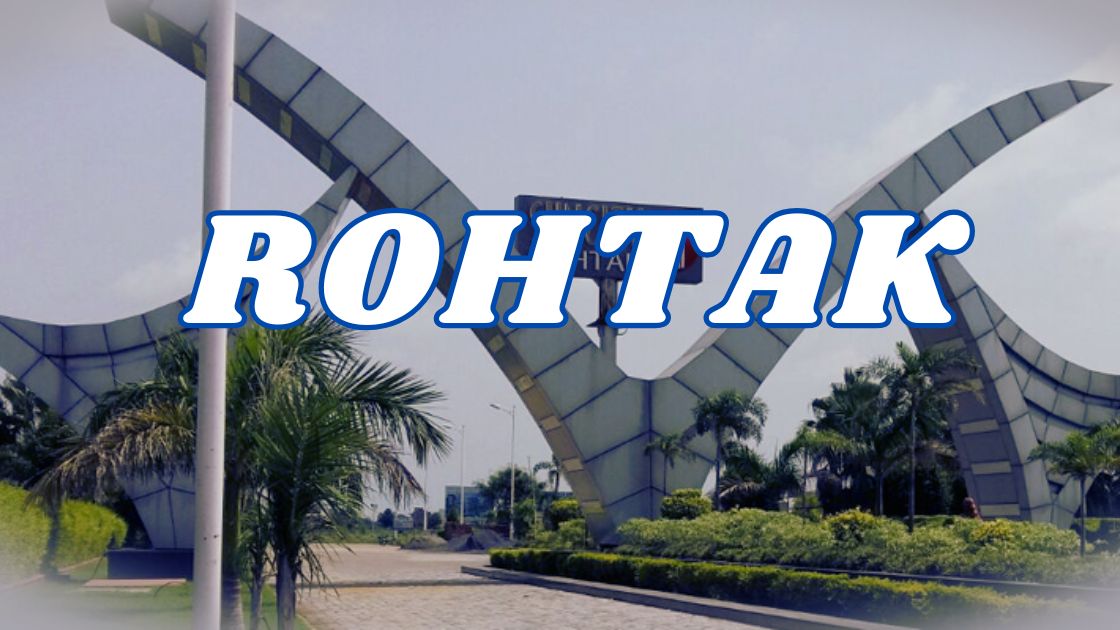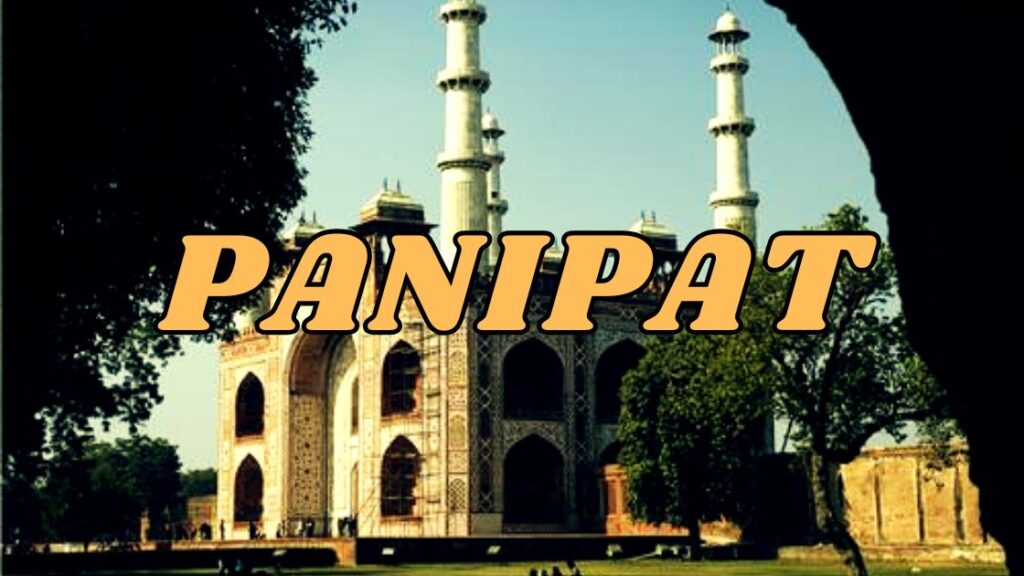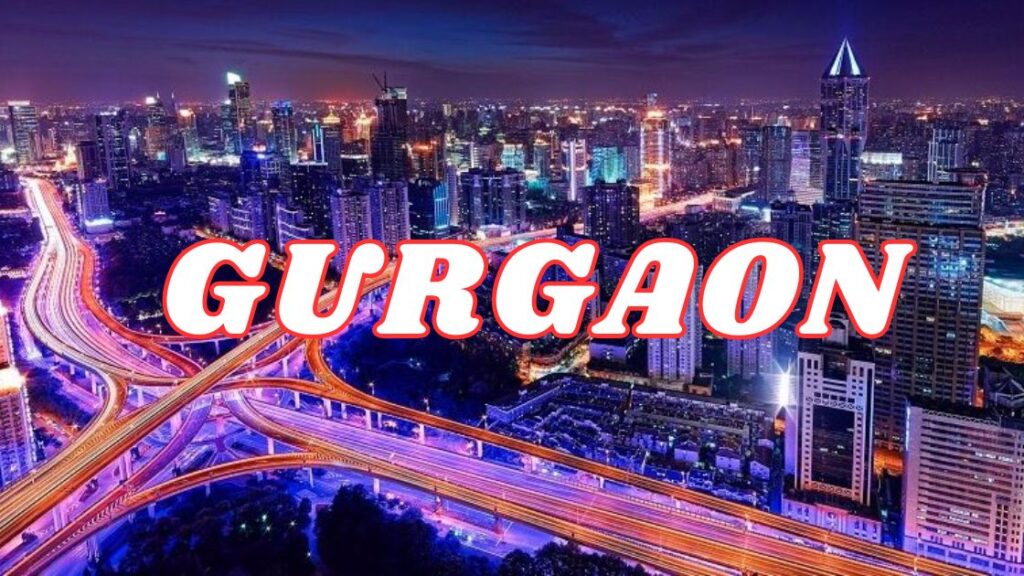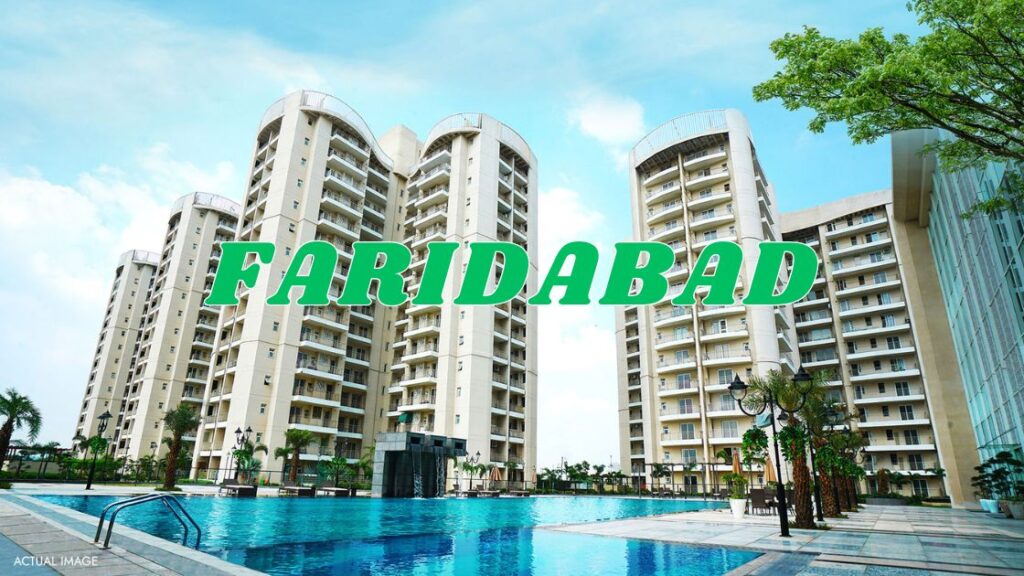Rohtak, a prominent city in the Indian state of Haryana, serves as the administrative headquarters of the Rohtak district. Strategically located approximately 70 kilometers (43 miles) northwest of New Delhi and 250 kilometers (160 miles) south of Chandigarh, Rohtak lies along National Highway 9 (formerly NH 10). Its inclusion in the National Capital Region (NCR) facilitates access to favorable infrastructure development loans from the NCR Planning Board.
As per the 2011 census, Rohtak is the sixth most populous city in Haryana, boasting a population of 373,133 residents.
Rohtak – Historic City of Haryana & Growing Hub in the NCR
The city’s name, Rohtak, is believed to be derived from the ancient term Rohitaka, as mentioned in the 12th-century text Raja Tarangini. This name also appears in the “Prasasti of Lakha Mandla at Madha,” indicating its historical significance in northern India.
History OF Rohtak
Rohtak, a city with a rich historical tapestry, has been a significant center of culture and power in northern India. Its history is marked by ancient settlements, strategic importance during various empires, and contributions to India’s cultural and political landscape.
Ancient Origins
Archaeological excavations at Kothakota, near Rohtak, have unearthed coin molds and clay seals dating back to the 3rd or 4th century CE, attributed to the Yadhya dynasty. These findings shed light on ancient coin casting techniques and suggest that Rohtak was a significant center for trade and commerce during that era. Additionally, artifacts from the Gupta period (4th to 6th century CE), including terracotta plaques and sculptures, have been discovered, indicating the city’s prominence during ancient times.

Medieval Significance
The 12th-century text, Rājataraṅgiṇī, references Rohtak as Rohitaka, highlighting its importance during that period. The Surya Siddhanta, a 4th-century astronomical treatise, mentions a prime meridian passing through Rohitaka (Rohtak), underscoring its significance in ancient Indian astronomy. In the 7th century CE, a statue of Parshvanath, the 23rd Jain Tirthankara, was found in Astha Bohar village, indicating the region’s association with Jainism. By the 10th century, coins from the reign of King Samanta Deva of the Hindu Shahi dynasty have been discovered, suggesting continued prosperity. However, between 1020-1030 CE, the city fell to the Ghaznavid invasions under Mahmud of Ghaani, marking a significant shift in its political landscape.

Mughal Era
During the Mughal period, the Ain-I-Akbari, a 16th-century document, lists Rohtak as a pargana under Delhi sarkar, contributing substantial revenue to the imperial treasury and supplying military forces. The presence of a brick fort during this time indicates its strategic importance.
Post-Mughal Period and British Era
In 1762, following the decline of Mughal power, Maharaja Surajmal, the Jat ruler of Bharatpur, sent his sons to capture territories in Haryana, including Rohtak. The Jat army successfully took control of the Rohtak pargana, encompassing areas like Gohana, Meham, Garhi Sampla, and Kalanaur. In 1824, the British established Rohtak as a separate district, comprising Gohana, Kharkhoda-Mandothi, Rohtak, Beri, and Meham-Bhiwani tehsils. Throughout the 19th and early 20th centuries, Rohtak underwent several administrative changes under British rule, reflecting its evolving political and administrative significance.
Rohtak’s history is a testament to its enduring importance as a center of culture, commerce, and governance in northern India.
Geography and Climate of Rohtak: An In-Depth Overview
Geographical Location
Rohtak, a prominent city in Haryana, is strategically located 70 kilometers (43 miles) northwest of New Delhi and approximately 250 kilometers (160 miles) south of Chandigarh, the state capital. It lies on National Highway 9 (formerly NH 10) and is an integral part of the National Capital Region (NCR), making it well-connected to major urban centers.
Climate of Rohtak
Rohtak experiences an extreme climate with significant temperature variations throughout the year. The city’s climate is characterized by hot summers, cold winters, and moderate monsoons.
- Summer (April to June): The temperature typically ranges between 30°C (86°F) and 42°C (108°F). However, extreme heat waves can push temperatures even higher. The highest temperature ever recorded in Rohtak was 48.8°C (119.8°F) on May 29, 2024.
- Winter (November to February): Winters are generally cold but do not frequently drop below freezing. The temperature fluctuates between 2°C (36°F) and 15°C (59°F). The lowest recorded temperature was −0.8°C (30.6°F) on December 24, 2011.
- Monsoon (July to September): The city receives substantial rainfall during this period, with an annual average of 597 mm (23.5 inches). The monsoon months contribute 80% of the total annual precipitation.
- Spring and Autumn: These transitional seasons experience moderate temperatures and low humidity levels, making them the most pleasant times of the year.
Rainfall and Hydrology
Rohtak’s average annual rainfall is around 58 cm, with the majority occurring between July and September due to monsoons. Additionally, the city receives sporadic rainfall from western disturbances during winter.
Since rainfall is inconsistent and often inadequate, agriculture in Rohtak relies heavily on irrigation systems, including canal networks and tube wells. The district has approximately 22,000 tube wells, which are essential for meeting both agricultural and domestic water needs.
Groundwater and Water Supply
The groundwater in Rohtak is found in semi-confined to unconfined aquifers.
- Unconfined aquifers are tapped through dug wells.
- Semi-confined aquifers are accessed using shallow tube wells, which form the primary source of water for irrigation and consumption.
The availability and quality of groundwater play a crucial role in the region’s agriculture, drinking water supply, and industrial development.
Geography of Rohtak
Rohtak is situated 70 kilometers (43 miles) northwest of New Delhi and 250 kilometers (160 miles) south of Chandigarh, the state capital. The city lies on National Highway 9 (formerly NH 10), making it well-connected to other major cities in Haryana and neighboring states. Rohtak’s strategic location within the National Capital Region (NCR) has contributed significantly to its rapid development and urbanization.
Climate of Rohtak
Rohtak experiences an extreme climate, characterized by hot summers, cold winters, and a monsoon season. The average annual rainfall in the city is 597 mm (23.5 inches), with the majority occurring during the monsoon months.
Temperature Variations
- Summers (April to June): The temperature in summer ranges between 30°C (86°F) and 42°C (108°F), with the highest recorded temperature being 48.8°C (119.8°F) on May 29, 2024.
- Winters (November to February): The temperature remains relatively cold, with a minimum recorded temperature of -0.8°C (30.6°F) on December 24, 2011.
- Monsoons (July to September): The city receives around 80% of its annual rainfall during these months, providing crucial irrigation support to agriculture.
The climate is categorized by high humidity during monsoons and dry conditions in summers, making Rohtak prone to temperature fluctuations.
Rainfall and Hydrology
Rohtak’s annual rainfall averages around 58 cm, with significant variations across different years. The monsoon rains play a vital role in replenishing groundwater, which is crucial for agricultural and domestic use. The city receives some additional winter rainfall from western disturbances.
Water Resources in Rohtak
Groundwater in Rohtak is stored in semi-confined to unconfined aquifers, making it a primary source of water. The 22,000 shallow tubewells and dugwells serve as crucial sources for irrigation and drinking water. However, the uneven distribution of rainfall makes water conservation essential for sustainable development.
Demographics of Rohtak
Population Growth Over the Years
Rohtak has witnessed significant population growth over the past century. As per the 2011 Census of India, the city had a population of 373,133, making it the sixth most populous city in Haryana. The population in 2001 was 294,577, indicating a 26.7% growth rate over a decade.
| Year | Population | Growth Rate |
|---|---|---|
| 1901 | 20,323 | – |
| 1911 | 20,361 | +0.2% |
| 1921 | 25,240 | +24.0% |
| 1931 | 35,235 | +39.6% |
| 1941 | 48,148 | +36.6% |
| 1951 | 71,902 | +49.3% |
| 1961 | 88,193 | +22.7% |
| 1971 | 124,755 | +41.5% |
| 1981 | 166,767 | +33.7% |
| 1991 | 216,096 | +29.6% |
| 2001 | 294,577 | +36.3% |
| 2011 | 373,133 | +26.7% |
Population Density and Literacy Rate
Rohtak is spread over an area of 72.18 square kilometers (27.87 square miles), with a population density of 5,186 persons per square kilometer, significantly higher than Haryana’s average of 573 persons per square kilometer.
The effective literacy rate in Rohtak is 84.08%, with male literacy at 88.94% and female literacy at 78.68%.
Sex Ratio and Age Demographics
The city has a sex ratio of 946 females per 1,000 males. Additionally, 10.9% of the population falls under the age of six, highlighting a young and growing demographic.
Religious Composition of Rohtak
Current Religious Distribution (2011 Census)
The majority of Rohtak’s population follows Hinduism (97.11%), with minor communities practicing Jainism, Islam, Sikhism, and other religions.
| Religion | Percentage |
| Hinduism | 97.11% |
| Jainism | 0.91% |
| Islam | 0.91% |
| Sikhism | 0.85% |
| Others | 0.22% |
Historical Religious Trends
In 1911, Hindus constituted 48.82% of the city’s population, while Muslims accounted for 46.3%. However, by 1941, the Hindu population had increased to 42.49%, whereas Muslims made up 52.19% of the city’s total population. The partition of India in 1947 significantly impacted Rohtak’s demographics, leading to a sharp decline in the Muslim population due to migration.
Government and Politics
Rohtak serves as an important administrative center in Haryana, housing a mini secretariat near the court. The city is part of the Haryana Sub-Region (HSR), a zone of strategic national interest, which includes urban centers like Gurgaon, Faridabad, Panipat, and Sonepat. The rapid urbanization of these areas has led to increased migration as people commute to work in the National Capital Region (NCR).
Political Controversy
Rohtak has been at the center of political debates due to the high number of development projects allocated to the city. Former Chief Minister Bhupinder Singh Hooda, who hails from a nearby village, faced allegations of favoring Rohtak, Jhajjar, and Sonepat over other regions. Over Rs. 3.4 billion has been spent on Rohtak’s development, sparking criticism from opposition parties and even members of his own party.
Infrastructure Development in Rohtak
Residential Sectors
Rohtak has multiple residential sectors, including both old and newly developed areas. Notable sectors include:
- Old Sectors: Sector 1, Sector 2, Sector 3, Sector 4, and Sector 14.
- Newly Developed Sectors: Sectors 5, 6, 28 (Omaxe City), and 34-36 (Suncity).
- Ongoing Developments: Sectors 21, 25, and 27.
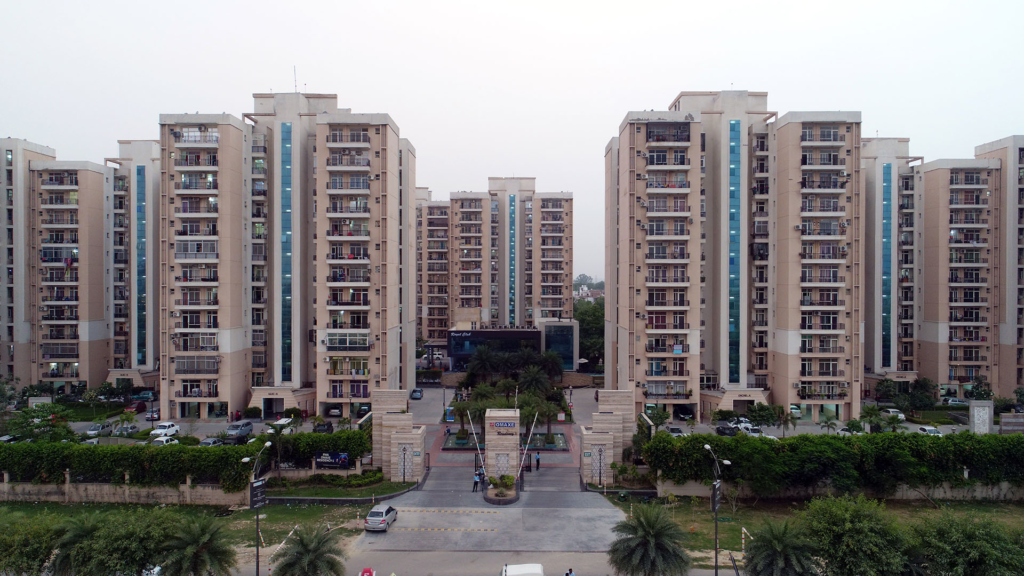
Popular neighborhoods like Model Town, DLF Colony, Sector 1, and Sector 14 are considered upmarket residential areas.
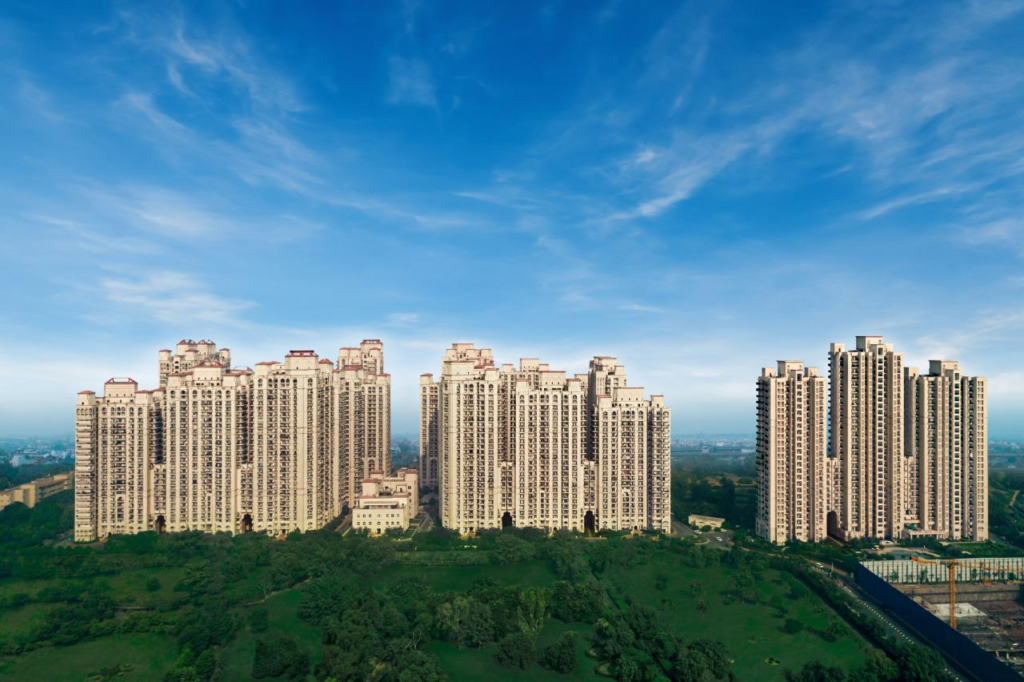
Smart City Contender
Rohtak was among the cities considered for the Smart City project. However, it secured only the third spot, behind Karnal and Faridabad. The selection process faced criticism, with claims of political bias affecting the final list.
Key Facilities in Rohtak
Healthcare
Rohtak is home to Pandit Bhagwat Dayal Sharma Post Graduate Institute of Medical Sciences (PGIMS) and Civil Hospital, both government-run institutions providing healthcare to Haryana and neighboring states like Punjab, Rajasthan, and Uttar Pradesh. PGIMS was initially established as Medical College, Rohtak, in 1960 and later expanded into a premier medical institute.

Transport and Connectivity
One of Rohtak’s major infrastructure projects is the elevated railway track, launched by CM Manohar Lal Khattar in 2018. The 6-km-long elevated railway track, costing Rs. 316 crore, is being developed on the Rohtak-Panipat line. Once completed, the existing railway track will be replaced by a road worth Rs. 8 crores.
Sewerage System
Rohtak has made significant progress in urban sanitation. The city’s sewerage system completion rate stood at 65% in 2001 and improved to 90% by 2011. Despite this, overall sewerage coverage across the NCR remains limited, with only 33 out of 108 towns having a functional sewerage system.
Government and Politics
Rohtak serves as an important administrative hub in Haryana and houses a Mini Secretariat, which is strategically located near the city’s court. This complex plays a crucial role in governance, handling various administrative functions and public services for the city and surrounding regions. The presence of this governmental infrastructure ensures effective management and oversight of developmental projects, civic amenities, and law enforcement.
Infrastructure and Urban Development
The Haryana Government has urged the Union Government to recognize the Haryana Sub-Region (HSR) as a strategic national interest zone due to its rapid urbanization and economic significance. This sub-region consists of 35 urban centers, including major cities like Gurgaon, Faridabad, Panipat, Sonepat, and Rohtak. With an urban population growth rate exceeding 60%, this region experiences one of the highest migration and workforce expansions within the National Capital Region (NCR). Many residents travel daily from these urban centers to New Delhi for employment, making infrastructural development a key priority to support the growing population.
Residential and Commercial Sectors
Rohtak has undergone significant urban expansion, with both old and newly developed sectors shaping the city’s residential and commercial landscape. Some of the well-established areas include Sector 1, Sector 2, Sector 3, Sector 4, and Sector 14. In recent years, newer sectors such as Sector 5, Sector 6, Sector 28 (Omaxe City), and Sectors 34-36 (Suncity) have emerged as thriving residential spaces.
Additionally, Sector 21, Sector 25, and Sector 27 are currently in the process of development. Among these, Model Town, DLF Colony, Sector 1, and Sector 14 are considered the most upscale neighborhoods, attracting high-end residential and commercial investments. D-Park in Model Town, known for its branded showrooms and entertainment hubs, has become one of the city’s most popular hangout spots.
Smart City Development and Urban Planning
Rohtak has been one of the contenders for the Smart City initiative, but its ranking remains behind Karnal and Faridabad, as per the screening committee evaluating Haryana’s urban centers. Chief Minister Manohar Lal Khattar’s hometown, Karnal, secured the top spot, followed by Faridabad, with Gurgaon, Rohtak, and Hisar ranking lower. The Department of Urban Local Bodies had invited recommendations from municipal authorities for cities to be considered under the Smart City Mission. However, Rohtak’s ex-mayor, Renu Dabal, has criticized the selection process, alleging political bias in the rankings and final city nominations.
Facilities and Infrastructure Projects
To enhance urban development, the Municipal Corporation of Rohtak has introduced a comprehensive strategy focusing on expanding residential areas, improving environmental sustainability, and upgrading road networks. One of the most ambitious infrastructure projects is India’s first railway elevated track, officially launched by Haryana’s CM Manohar Lal Khattar on March 17, 2018. The 6-kilometer-long railway track, costing approximately Rs. 316 crores are designed to replace the existing railway line on the Rohtak-Panipat route. This transformation will enable the construction of a road over the former railway track, which is estimated to cost Rs. 8 crores. This project aims to enhance connectivity and reduce congestion, making travel more efficient for both commuters and goods transport.
Healthcare Infrastructure
Rohtak stands as a major healthcare hub in Haryana, home to some of the state’s most advanced medical facilities. The city hosts the prestigious Pandit Bhagwat Dayal Sharma Post Graduate Institute of Medical Sciences (PGIMS) and Civil Hospital, both of which are operated by the Haryana Government. PGIMS Rohtak, situated 70 km from Delhi and 240 km from Chandigarh, is not just a medical college but a fully equipped tertiary care center offering specialized healthcare services. Initially established in 1960 as Medical College, Rohtak, the institute was later renamed Pt. B.D. Sharma Medical College in 1994 and upgraded to a Post Graduate Institute of Medical Sciences in 1995.
Today, PGIMS Rohtak is recognized at both national and international levels for its medical education, research programs, and healthcare services. The institution boasts a sprawling 350-acre campus, with state-of-the-art medical and research facilities. Over the last five decades, PGIMS Rohtak has played a crucial role in medical advancements, aligning with India’s national healthcare mission of ‘Health for All by 2020.’ The hospital caters not only to patients from Haryana but also from Punjab, Rajasthan, Delhi, and Western Uttar Pradesh, making it a critical medical institution in North India.
Sewerage and Sanitation Development
The National Capital Region (NCR) includes 108 towns, but only 33 towns have a functioning sewerage system. Even within these towns, sewerage coverage remains incomplete, often leading to sanitation challenges and urban flooding. Key NCR cities such as Delhi, Meerut, Ghaziabad, Noida, Faridabad, Panipat, Gurgaon, Rohtak, Sonepat, and Alwar have made significant progress in developing sewerage networks. In Rohtak, the sewerage system was 65% completed in 2001 and reached 90% completion by 2011, according to official reports. Further expansions are planned to ensure full coverage and improved sanitation facilities across the city.
Political Controversy and Infrastructure Funding
Rohtak’s rapid development has been a subject of political debate, particularly during Bhupinder Singh Hooda’s tenure as Haryana’s Chief Minister. In 2013, opposition parties and even some members within the Congress Party criticized Hooda for allegedly favoring his home district over other parts of Haryana. BJP leader Rao Inderjit Singh used Right to Information (RTI) data to reveal that out of 5,135 development projects announced in Haryana, 2,045 were allocated to Rohtak, Jhajjar, and Sonepat—all within Hooda’s constituency. This disproportionate allocation of resources sparked accusations of regional bias and political favoritism.
In response to these allegations, Haryana’s Urban Development Authority (HUDA) disclosed that over Rs. 3.4 billion had been spent on Rohtak’s development. By December 31, 2010, HUDA had collected Rs. 3.22 billion in external development charges for the city but had spent nearly Rs. 6.63 billion from its budget. Despite these controversies, Gurgaon, Faridabad, Hisar, Panchkula, Panipat, and Ambala remain Haryana’s most heavily funded cities in terms of infrastructure investment over the last 15 years.
Economy of Rohtak: Growth, Industries, and Infrastructure
Rohtak has emerged as a significant economic hub in Haryana, fueled by rapid industrialization, infrastructural advancements, and its strategic location within the National Capital Region (NCR). The city’s economy has witnessed substantial growth, with a strong presence of manufacturing, automotive, and research industries, attracting both domestic and international investments.
Industrial Development and Townships
The Haryana State Industrial and Infrastructure Development Corporation (HSIIDC) has played a crucial role in Rohtak’s industrial expansion. To boost economic growth, HSIIDC has developed the Industrial Model Township (IMT), which has become a preferred destination for multinational corporations (MNCs) and large-scale industries. The IMT has successfully attracted major global and Indian brands such as Maruti Suzuki, Asian Paints, Suzuki Motorcycle, Nippon Carbide, Amul, Lakshmi Precision Screws, and Aisin Automotive. These companies have established their manufacturing and operational units, contributing significantly to employment generation and economic output.
The Industrial Model Township is designed with modern infrastructure, ensuring efficient connectivity through highways and rail networks. The township provides state-of-the-art facilities, including advanced logistics support, dedicated industrial zones, and a robust power supply system, making it an ideal destination for large-scale manufacturing and export-oriented industries.
Maruti Suzuki’s Research and Development Facility
Rohtak has gained national attention with the development of Maruti Suzuki’s Mega Research and Development (R&D) Facility. This advanced R&D center, one of the largest in India, is transforming the city into a hub for automobile innovation and technology. R.C. Bhargava, the non-executive chairman of Maruti Suzuki India, emphasized the importance of this facility, stating, “We will be able to do research and development and testing comparable to anything Japan has. Earlier, we had to send all our models to Japan for testing; now, all that can be done here. This will result in significant savings in time and money.”
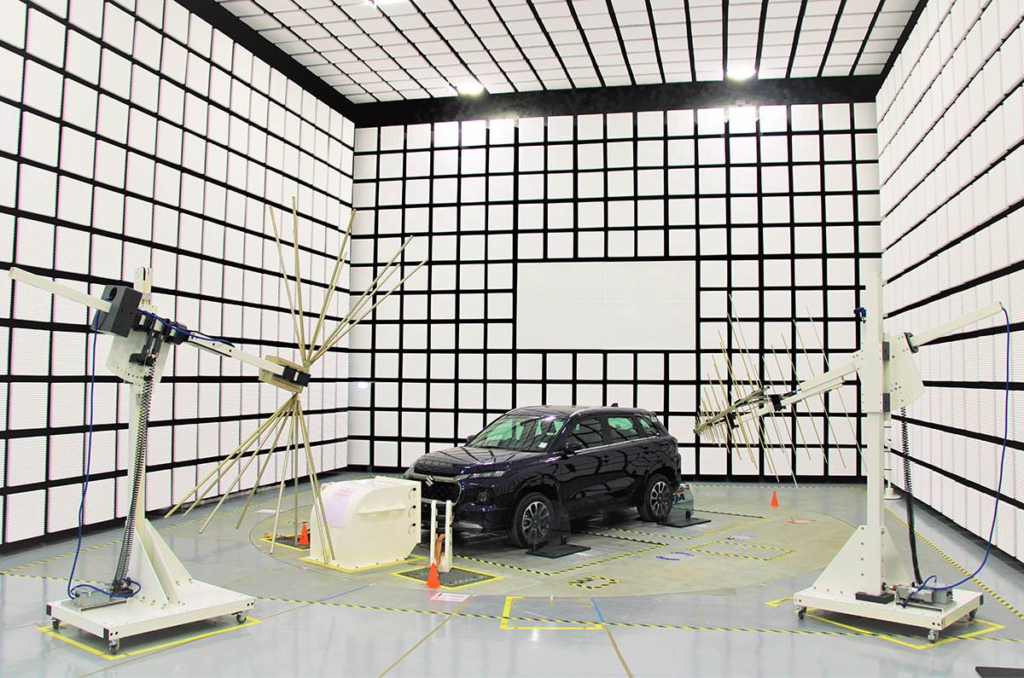
The R&D center is equipped with cutting-edge testing tracks, emission labs, crash test facilities, and design development centers. It allows Maruti Suzuki to develop and test new vehicle models locally, reducing dependency on foreign testing centers. This move not only strengthens India’s automotive industry but also positions Rohtak as a key player in vehicle innovation and sustainability.
Economic Impact and Employment Growth
The establishment of industrial zones and research facilities has significantly boosted employment opportunities in Rohtak. Thousands of skilled and semi-skilled workers are directly or indirectly employed across various sectors, including manufacturing, automotive engineering, logistics, and retail. The city has witnessed a surge in job creation, business investments, and overall economic prosperity.
Additionally, the influx of industries has led to an increase in real estate development, commercial establishments, and improved civic infrastructure. Modern residential townships, shopping complexes, and multiplexes have emerged, catering to the growing population and urban workforce.
Future Prospects and Industrial Growth
Rohtak’s economic future looks promising, with continued investments in infrastructure, smart city initiatives, and transportation networks. The Delhi-Mumbai Industrial Corridor (DMIC), Eastern Peripheral Expressway, and upcoming metro connectivity will further enhance its accessibility and economic appeal.

The Haryana government is also encouraging the growth of green industries, renewable energy projects, and technology-driven enterprises. Special economic zones (SEZs) and business parks are expected to attract IT and service-based industries, further diversifying Rohtak’s economic landscape.
Culture and Heritage of Rohtak
Rohtak, a city deeply rooted in history, has preserved a rich and antique heritage that reflects the traditions of ancient India and the Mughal era. Several architectural marvels, including temples, mosques, and havelis, stand as a testament to its glorious past. The Baba Mast Nath Math, a historic monastery established in 1731 by Baba Mast Nath, remains one of the most revered religious sites in the region. This monastery has played a crucial role in shaping the spiritual and cultural landscape of Rohtak.

Among other notable heritage sites, the Gokaran and Kiloi temples showcase intricate carvings and traditional Indian architecture, attracting devotees and tourists alike. The city also houses several spacious havelis with beautifully decorated facades, finely carved wooden doors, and sandstone pillars, reminiscent of the Mughal era. Many mosques that once featured exquisite stucco decorations still stand, although time has faded their grandeur.

Efforts to document and preserve Rohtak’s heritage have been undertaken by the Society for Peoples’ Advancement, Technology, and Heritage (SOPATH). The organization has conducted surveys in large villages such as Balambha, Farmana Khas, Lakhan Majra, Jassia, Bhaini Surjan, and Meham, studying their historical structures and artifacts. These initiatives aim to safeguard the cultural identity of Rohtak for future generations.
Sai Mandir and Spiritual Influence
The Sai Mandir in Rohtak is a significant religious landmark, attracting thousands of devotees each year. Dedicated to Shirdi Sai Baba, the temple exudes a sense of peace and devotion. Its intricate marble work, spiritual ambiance, and grand aarti ceremonies make it one of the most visited religious sites in the city. The temple serves as a place for meditation and prayers, drawing devotees not only from Rohtak but also from nearby cities and states.
Rohtak’s Medieval Past
Rohtak’s history dates back to the medieval era, with evidence of a centuries-old fort located in present-day Qilla Mohallah. This fort, constructed during the Ghauri Dynasty, was built by Sheikhs from Yemen under Qazi Sultan Muhammad Surkh Zulqarni. It served as a strategic stronghold during the rule of the Delhi Sultanate. In 1400, Delhi’s ruler Mahmud Tughlaq appointed two brothers, Malik Idrees and Mubariz Khan, to oversee the fort and maintain control over the region.
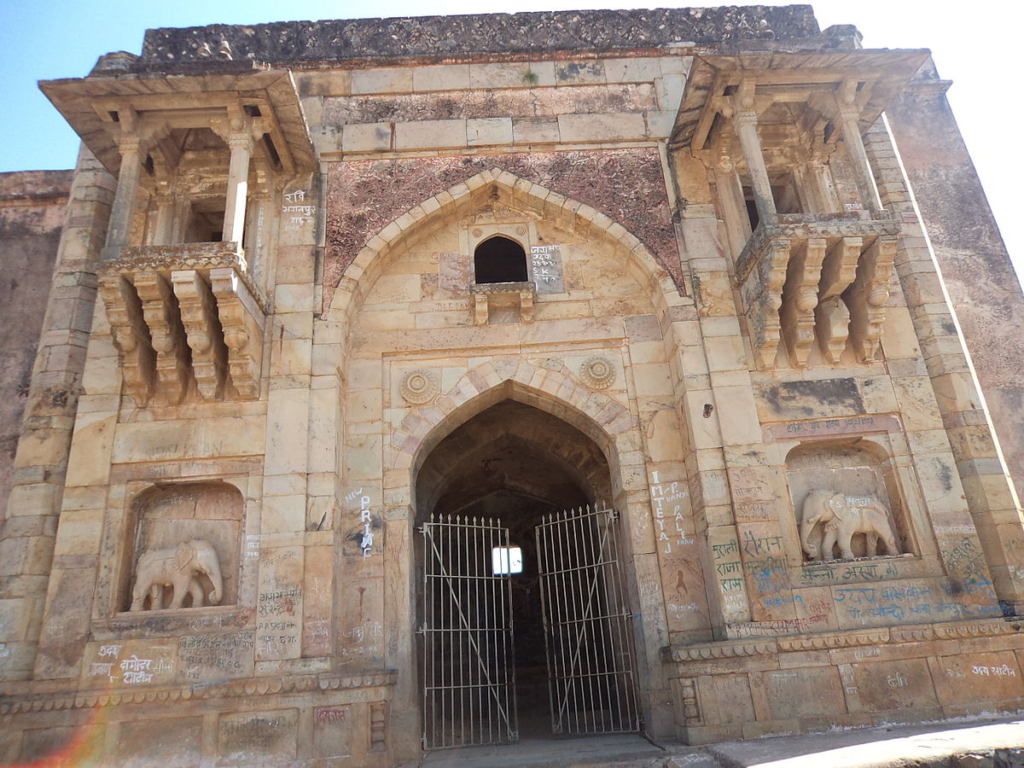
In 1410, the fort became the focal point of a historic siege led by Syed Khizer Khan, the founder of the Sayyid Dynasty. After an intense six-month-long battle, the fort finally fell into his hands. This victory marked a significant moment in Rohtak’s history, as it transitioned from the rule of the Tughlaq dynasty to the Sayyid Dynasty. Despite the passage of time, remnants of this medieval fortification still exist, providing a glimpse into the city’s military and political significance in ancient India.
The British Era (1800-1947): Colonial Influences in Rohtak
Rohtak was among the first organized districts in Haryana under British rule. The British officers established their administrative headquarters in the city as early as 1810, shaping its infrastructure and governance. One of the most prominent colonial-era structures is the All-Saints Church, constructed in 1867. This church remains an architectural masterpiece, reflecting Gothic and Victorian styles that were popular during the British era.
The central hall of All Saints Church was built by Major Feindala in memory of his daughter, Athel Nora, adding an emotional and historical significance to the structure. The church’s wooden interiors and stained-glass windows were contributed by JF Bruster and RF Kalenal, showcasing a blend of Indian and European craftsmanship.
A historic cemetery near the Mini Secretariat building in Rohtak contains tombstones that date back over 180 years. This graveyard was once surrounded by a lush garden, which has now been reduced to a narrow strip of land. Among the notable tombstones, one belongs to DC Moore, a prominent British officer. Unfortunately, the cemetery has fallen into neglect, with overgrown thorny vegetation covering many of the tombstones. However, efforts are being made to restore and protect this important colonial heritage site.
Preserving Rohtak’s Cultural Legacy
Rohtak’s blend of ancient, medieval, and colonial influences makes it one of the most historically significant cities in Haryana. From the temples and mosques of the past to the colonial churches and forts, the city narrates a rich and diverse story. While rapid urbanization and modernization pose challenges to preserving these sites, local heritage organizations and government initiatives are working towards maintaining the cultural and historical identity of Rohtak.
As interest in historical tourism grows, efforts to restore, document, and promote Rohtak’s heritage will play a crucial role in keeping its history alive for future generations. With a unique mix of Hindu, Mughal, and British influences, Rohtak remains a fascinating city that continues to honor its past while embracing the future.
Transportation
Roads
Rohtak is well-connected by a robust road network, featuring three national highways and two state highways:
- NH-9 – Connects New Delhi to Rohtak and extends to Punjab.
- NH-709 – Links Rajgarh (Haryana) to Panipat.
- NH-352 – Runs from Narwana to Rewari.
- SH-16 and SH-18 – Provide additional connectivity within the state.
The NH-9 segments between New Delhi and Rohtak has been upgraded to six lanes, featuring a 30 km bypass to ease congestion. Additionally, the NH-9 section between Rohtak and Hisar is being widened to four lanes to improve traffic flow.
Railway Connectivity
Rohtak Junction railway station serves as a major railway hub, with direct connections to Delhi, Panipat, Rewari, Bhiwani, and Jind. Important railway lines include:
- Delhi-Fazilka Line – A double-tracked and electrified route connecting Delhi to Punjab.
- Rohtak-Panipat Line – A single-track electrified line.
- Rohtak-Rewari Line – Connects Rohtak with Rewari via Jhajjar.
- Rohtak-Bhiwani Line – Links Rohtak to Hisar via Bhiwani.
Major Train Services
Rohtak is served by several prestigious trains, including:
- New Delhi–Moga Shatabdi Express
- New Delhi–Firozpur Shatabdi Express
- New Delhi–Ludhiana Shatabdi Express
- Ajmer-Chandigarh Garib Rath Express
Since March 2013, EMU services have been operational between New Delhi and Rohtak, providing an efficient and cost-effective mode of transportation for daily commuters.
Air Travel
Currently, Rohtak does not have a commercial airport. However, the Haryana government has proposed a Greenfield Cargo Airport in Maham, with in-principal approval from the Airports Authority of India (AAI). Until its completion, the nearest international airport is Indira Gandhi International Airport (Delhi), located approximately 72 km away.
Education in Rohtak
Rohtak, a city located in the northern part of India, is rapidly emerging as a significant educational hub, offering a wide range of educational opportunities across various fields. From prestigious institutes to government-run universities, the city is home to several establishments that cater to diverse academic needs.
One of the prominent educational institutions in Rohtak is Kendriya Vidyalaya Rohtak, part of the national network of schools managed by the Kendriya Vidyalaya Sangathan (KVS). The school offers quality education following the Central Board of Secondary Education (CBSE) curriculum, aiming to provide holistic development to students. The campus is equipped with modern amenities and is recognized for its excellent academic record.

Maharishi Dayanand University (MDU) is another key educational institution in Rohtak, founded in 1976 and named after the renowned saint Dayananda Saraswati. MDU offers a wide array of undergraduate, postgraduate, and doctoral programs in fields like arts, science, commerce, engineering, and management. The university is well-regarded for its academic rigor and research contributions, making it a significant player in the region’s higher education landscape.
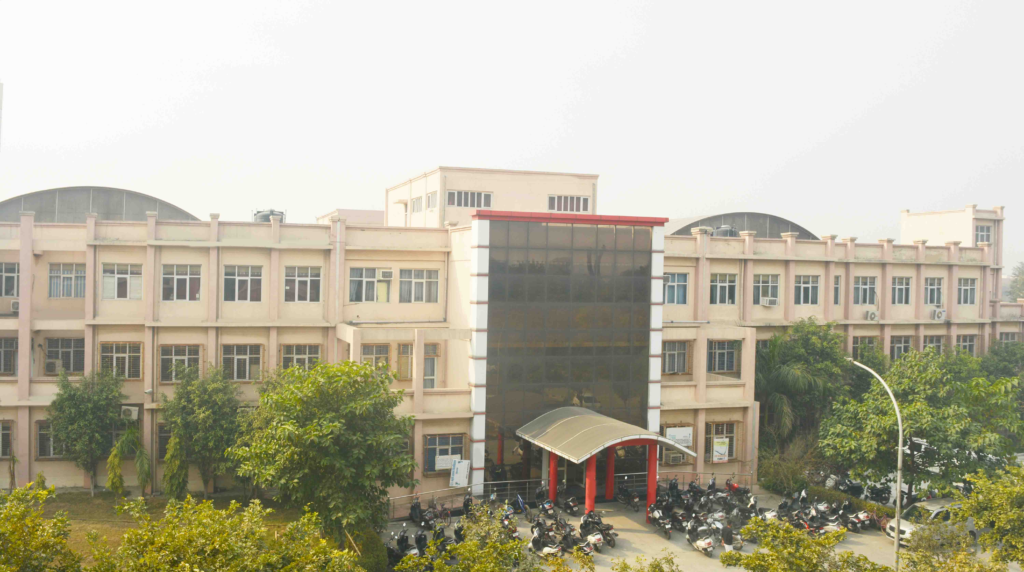
For students interested in the engineering and technological domains, the Institute of Engineering and Technology at Maharishi Dayanand University provides a strong foundation in various branches of engineering. With its state-of-the-art infrastructure and experienced faculty, the institute is committed to delivering high-quality education in the field of technology and innovation.
Rohtak also houses the prestigious Indian Institute of Management Rohtak (IIM Rohtak), which is considered one of the top management institutes in India. Known for its cutting-edge curriculum, IIM Rohtak has positioned itself as a hub for analytics and business studies. It offers various management programs, including MBA, executive education, and doctoral research opportunities. The institute’s emphasis on analytics and data-driven decision-making aligns with the current trends in business education.

In addition to IIM Rohtak, the Indian Institute of Technology (IIT) Delhi is also expanding its reach with an extension campus in Rohtak. With a budget of Rs 50 crore, this new campus is expected to bolster the region’s reputation as a leading educational center in India. IIT Delhi is renowned globally for its excellence in engineering, technology, and innovation, and its new campus will undoubtedly attract top-tier students and faculty.
The city also boasts of the Pandit Bhagwat Dayal Sharma Post Graduate Institute of Medical Sciences (PGIMS), a renowned government medical institution. Established in 1960, PGIMS offers undergraduate and postgraduate medical programs and is well-regarded for its contributions to medical education and healthcare services. In 2009, there were proposals to upgrade the institute to the level of AIIMS (All India Institute of Medical Sciences), which reflects its commitment to expanding its capabilities and offering world-class medical education.
For aspiring filmmakers and those interested in the arts, the State Institute of Film and Television provides a unique opportunity for students to delve into the world of cinema. Established in 2011 under the State University of Performing and Visual Arts, this film school offers specialized courses in film production, direction, editing, and cinematography, fostering creativity and skill development in the media and entertainment industry.

Rohtak is also home to a number of universities catering to diverse academic and professional fields. Baba Mastnath University, a private institution established in 2012, offers a variety of courses, including those in engineering, management, and humanities. The university is committed to providing quality education while integrating modern teaching methodologies and research opportunities.
Media and Communications in Rohtak also play an essential role in the region’s educational landscape. All India Radio operates a local station in the city, broadcasting a variety of programs that cover mass interest topics such as news, education, culture, and entertainment. This local station provides a platform for students and professionals to stay informed about current events while enhancing their communication skills.
In conclusion, Rohtak is an emerging educational hub with a variety of institutions catering to different fields of study. From engineering to medicine, management, and the arts, the city offers abundant opportunities for students to pursue their academic aspirations. The continuous development of educational infrastructure, along with the establishment of new campuses and research institutes, ensures that Rohtak will remain at the forefront of education in India. Whether it’s a prestigious management institute or a specialized film school, Rohtak is poised to become a center of academic excellence in the coming years.
Sports in Rohtak: Infrastructure and Achievements
Rohtak, a city in Haryana, is home to several sports facilities that cater to the growing interest in sports and athletics. The Haryana Urban Development Authority (HUDA) has significantly contributed to the development of sports infrastructure in the region, most notably through the Rajiv Gandhi Sports Complex in Sector-6. Completed in 2012, this sports complex offers world-class facilities for a variety of sports. The complex includes cricket, hockey, football, and tennis courts, along with an athletics stadium, wrestling hall, and swimming pools. These facilities have helped position Rohtak as a center for both professional and amateur sports.
One of the standouts features of the Rajiv Gandhi Sports Complex is its athletic pavilion, which has a height of 100 feet and can accommodate up to 8,000 spectators. A synthetic track has been constructed in front of the pavilion, providing an ideal space for athletes to warm up. In addition, the complex has three earthen mounts designed to international standards, offering seating for an additional 22,000 spectators. Together, these facilities allow the sports complex to host up to 30,000 spectators, making it one of the largest sports venues in the region.
The Chaudhary Bansi Lal Cricket Stadium, located in Lahli, Rohtak, is another key sports facility in the city. This cricket ground, which can accommodate 8,000 spectators, gained significant attention when cricket legend Sachin Tendulkar played his last Ranji match at the stadium in October 2013. The stadium is an important venue for local and regional cricket events and has contributed to the growing popularity of the sport in the area.
In recent years, the sports infrastructure in Rohtak has played a key role in nurturing talent in various disciplines, including wrestling, boxing, and swimming, which have been key sports for athletes from Haryana. The city’s growing recognition as a sports hub provides both young and professional athletes with the necessary resources and training opportunities to excel on national and international stages.
Notable Individuals from Rohtak: Contributions in Various Fields
Rohtak has produced a number of notable individuals who have made significant contributions to various fields, including politics, sports, and entertainment. Some of these individuals have not only gained recognition nationally but have also left an indelible mark on the global stage.
One of the most celebrated personalities from Rohtak is Manushi Chhillar, who was crowned Miss World 2017. A model and actress, Chhillar’s victory in the prestigious international beauty pageant brought global attention to Rohtak and highlighted the city’s potential in nurturing talent across diverse domains.
In the world of sports, Sakshi Malik, an Olympic bronze medalist in women’s 58 kg freestyle wrestling at the 2016 Rio Summer Olympics, hails from Rohtak. Her victory brought immense pride to both Haryana and India, inspiring many young girls in the region to pursue wrestling and other sports professionally.
Rohtak is also known for producing outstanding boxing talent, including Amit Panghal, an Asian Games gold medalist in light flyweight men’s boxing. Panghal’s achievements have helped elevate the profile of boxing in Haryana and across the country, inspiring future generations of boxers to follow in his footsteps.
The city has also given rise to significant political figures, including Bhupinder Singh Hooda, the former Chief Minister of Haryana, and Deepender Singh Hooda, a prominent politician. These individuals have had a substantial impact on the political landscape of Haryana, shaping policies and initiatives for the state’s development.
In addition to political leaders, Rohtak is also the birthplace of Major Mohit Sharma, a 1 Para SF soldier who earned recognition for his valor and bravery. He is regarded as a national hero, symbolizing courage and dedication to duty. Another significant figure is Karambir Singh, the 24th Chief of the Naval Staff (CNS) of the Indian Navy, whose leadership has been instrumental in advancing the capabilities of India’s naval forces.
The city has also produced prominent figures in various other fields, such as Randeep Hooda, a renowned Bollywood actor, and Dhruv Rathee, an Indian YouTuber, who have made significant contributions to their respective industries.
- The Rajiv Gandhi Sports Complex and Chaudhary Bansi Lal Cricket Stadium are major sports venues in Rohtak, offering excellent facilities for athletes and spectators alike.
- Sakshi Malik and Amit Panghal are notable sports figures from Rohtak, excelling in wrestling and boxing, respectively.
- Rohtak has produced a range of influential individuals in politics, sports, and entertainment, including Bhupinder Singh Hooda, Manushi Chhillar, and Randeep Hooda.
- Major Mohit Sharma and Karambir Singh represent the city’s contribution to the Indian Armed Forces and national security.
Rohtak continues to thrive as a city with a rich history of producing talented individuals and investing in world-class sports infrastructure. The city’s contributions to both national and international stages in various sectors demonstrate its growing significance as a hub for education, sports, and leadership.

